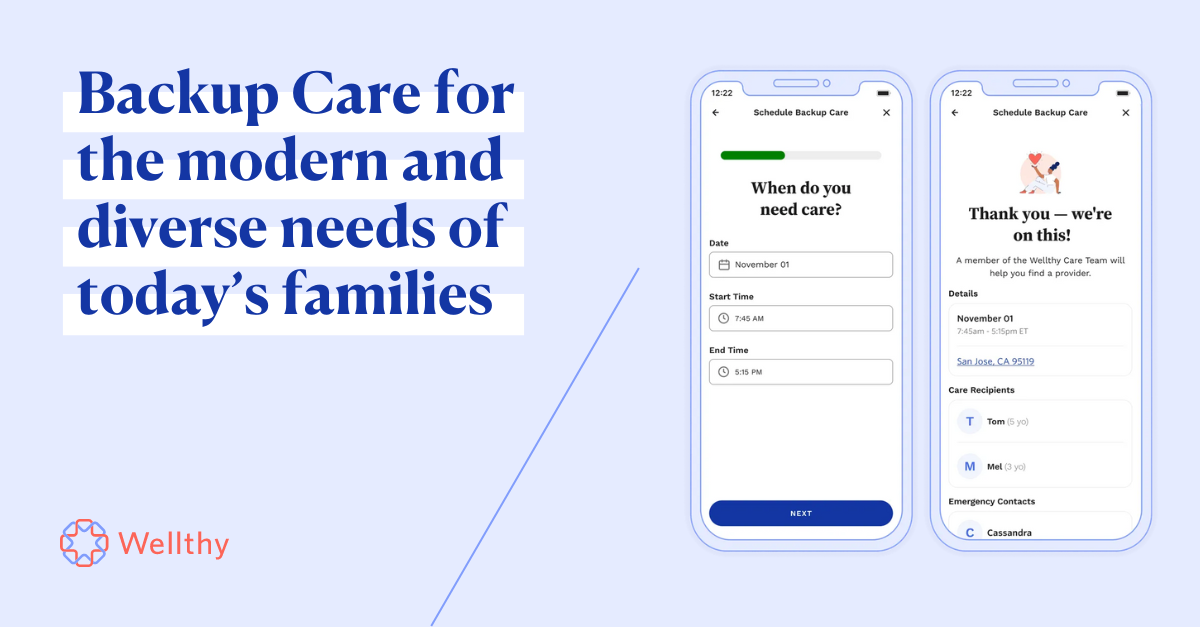2021 was the year of the caregiver. These last few years have shown us just how much work our caregiving colleagues put in as they take care of family members. At Wellthy, we’ve witnessed a collective, growing recognition of the caregiving crisis, and we’ve seen employers step up in incredible ways to support their people.
But we still have a long way to go. Caregiving continues to be a lonely, isolating experience for so many working adults, and stigma around caregiving can still permeate all types of workplaces.
Whether real or perceived stigma, employees don’t often speak up about their care situation at work. They fear that admitting to caregiving could undermine their career trajectory or make them seem less committed. While it’s become commonplace to talk about our kids at work, it’s far less common to hear about the day-to-day challenges of a co-worker who is taking care of a parent with dementia, their child’s special needs, or perhaps a spouse with an ongoing medical condition.
The stigma around caregiving makes it hard for employees to reach out when they need help and to utilize relevant company resources. Making efforts to de-stigmatize caregiving within your organization can help build a caring culture that enables all employees to thrive at work.
Here are five actionable tips for de-stigmatizing caregiving in the workplace.
1. Show vulnerability by senior leadership
Working from home has given us moments of vulnerability across our companies. We’ve all seen a few fun guests in the background of Zoom meetings, like a child or a pet walking across a keyboard. These moments have been welcome distractions and made senior leaders relatable to everyone in the company.
Senior leadership sets the tone for the rest of the organization. If employees see senior leaders opening up about their responsibilities outside of work, they’ll feel more comfortable sharing their struggles too. It’s crucial to show vulnerability and caring to ensure that employees know others are dealing with similar challenges.
2. Help employees identify as caregivers
Many individuals who care for loved ones don’t label their situation as “caregiving,” and therefore don’t take advantage of resources that might be helpful to them. For some, caring for aging loved ones is an unspoken cultural expectation, while others simply may not recognize the extra tasks and emotional responsibility they have taken on. In fact, caregiving organization, ARCHANGELs, found that 50% of caregivers don’t identify with the term.
Raising awareness about caregiving is a great strategy for showing support to employees who may be in caregiving situations without realizing it and for creating a safe space to open up about their needs.
In trying to reach this population, positioning helpful benefits and resources “caregiving benefits” may not resonate. Rather than referring to “caregivers,” try to speak to the specific situations a person may be navigating: ie, “employees managing chronic health conditions,” “parents of children with special needs,” or “employees caring for an aging parent or relative.”
3. Use storytelling to show employees that they are not alone
Stories connect employees and help demonstrate your organization’s commitments. If you are dedicated to de-stigmatizing caregiving in the workplace, use the following strategies to utilize the power of storytelling to empower caregivers:
- Showcase stories about work/life balance and caring for family members in employee newsletters
- Share real-life examples of how caregiving employees have found support from company resources or policies
- Make room to talk about personal life in meetings through icebreakers and small talk
- Highlight caregiving employees on your career page and in recruitment material
4. Develop an employee resource group for caregivers
Employee resource groups have a positive impact on employees. Connecting with other caregivers in the organization can make employees feel less alone. In addition, the collective nature of ERG’s can ensure that all caregivers have their voices heard on important company policies and procedures.
5. Offer supportive policies and benefits to employees
It’s essential to back up your words with policies and benefits that support your employees. Caregivers need benefits that allow for flexibility at work. Here are some ideas to rethink your company’s policies and benefits:
- Offering work-from-home options where possible
- Giving employees a chance to miss a meeting or start the day later if they need to attend to caregiving duties — record the meeting so they can catch up later!
- Use tools like Wellthy to help employees find the resources they need to be better caregivers
- Expanding your paid time off policy to better accommodate the quirky schedules some caregivers may have
- Offering stipends or dependent care FSAs to help caregivers pay for their expenses
Your organization has what it takes to de-stigmatize caregiving
Caregiving isn’t a new experience. It’s just become harder to ignore at work.
De-stigmatizing caregiving will help all of your team members feel more appreciated, even if they don’t take advantage of all of the resources your company provides. Taking small steps towards celebrating your employees for what they do inside and outside of work will make a significant impact on your company culture.
Seeing the culture change can take time, but we know your organization has what it takes.







